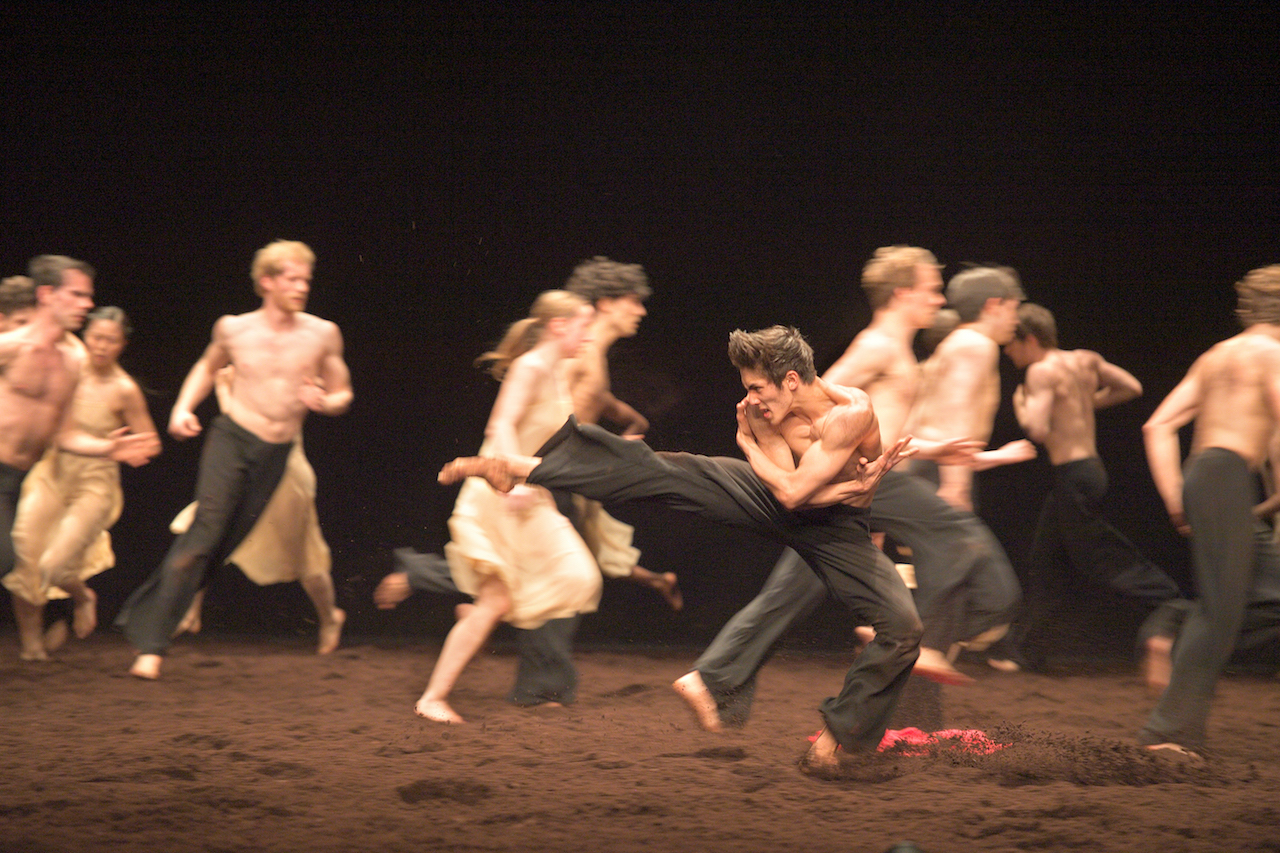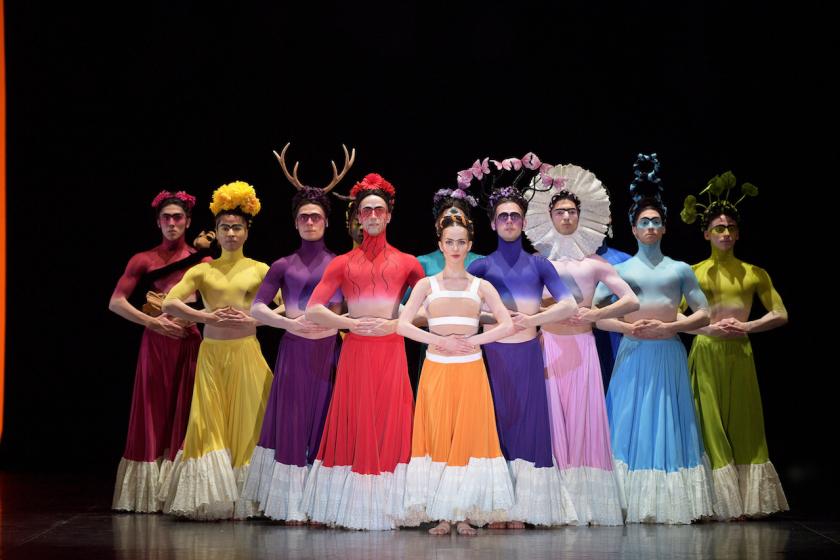She does indeed persist, that remarkable Tamara Rojo. Dismayed by the fact that, in 20 years as a dancer, she had never performed a ballet made by a woman, she mounted a triple bill called She Said, featuring only work by and about women. That 2016 conversation is resumed in English National Ballet’s current spring showing at Sadler’s Wells which revives the best of those commissions – Broken Wings, a phantasmagorical tour through the life of the artist Frida Kahlo – along with a sell-out hit from two years ago, the Pina Bausch version of The Rite of Spring.
Stina Quagebeur, a dancer with ENB making her choreographic debut on a big stage, certainly knows how to move bodies around. She also shows confidence as a narrator, stripping Ibsen’s plot to the bone: Nora fields just three protagonists and a small chorus as the heroine’s conscience. The resulting drama is taut as a bow, and it feels short – always a plus with a newbie.
Crystal Costa’s heroine is all flowery arms and girlish compliance with her husband Torvald (Jeffrey Cirio) until a moment of truth makes her see that his patronising has kept her in a state of permanent adolescence. So far so good. But plot complications such as blackmail are a no-go in wordless drama, and that’s where this ballet, for all its fluency, comes unstuck. Those unfamiliar with the play won’t have a clue when dastardly bank clerk Krogstad (Junor Souza in a fabulous egg-yolk-yellow suit) turns up looking threatening. As for the accompanying music, you either love or loathe the arpeggiated tedium of Philip Glass, but it’s a shame when choreography falls into step with that four-square doggedness. An exception is when Torvald discovers that his child-wife plans to leave him. No four-bar phrasing here, nor obstacles to comprehension: this is alpha-male fury writ large and briefly, we're gripped.
Annabelle Lopez Ochoa is an older hand at this game, and her exuberant bio-ballet of the Mexican painter Frida Kahlo takes all kinds of risks with pace and narrative loopiness that only experience can deliver. Set to a compelling score by Peter Salem dominated by cool marimba and chilli-spiked Tijuana trumpet, it begins with Kahlo as a lively schoolgirl cavorting with skeletons. These Day of the Dead ciphers are not so much grim reapers as mischievous reminders of the twists fate can take. Cue a life-changing traffic accident – ingeniously suggested by screeching and headlamp glare. Isolated and in pain, strapped to a hospital bed for months, Kahlo envisions herself, monobrow and all, in a parade of fantastical beings: as a deer, as a butterfly, as a man, as any number of exotic plants and flowers … It’s these flights of visual zaniness (design: Dieweke van Reij, drawing on Kahlo’s paintings) that ultimately make Broken Wings memorable.
On this revival, Katja Khaniukova takes the role of the spirited Khalo. Veteran Irek Mukhamedov reprises his clownish turn as the roly-poly Diego Rivera, her unfaithful husband. It’s a measure of Tamara Rojo’s directoral bold ambition that she secured the rights from the Pina Bausch estate for ENB to dance her Rite of Spring (pictured above). Since its creation in 1975 only Paris Opera Ballet and Bausch’s own company had been allowed to do it. And for a purely classical company the challenge is immense. Decorousness and grace go out of the window. Here the dancers must adopt an earthy weightedness animated by fear, bewilderment and fury. Movement alternates between savage running, falling, cowering, huddling, manic self-flagellation and simulated copulation. The thick layer of peat that covers the stage soon transfers to sweating bodies.
It’s a measure of Tamara Rojo’s directoral bold ambition that she secured the rights from the Pina Bausch estate for ENB to dance her Rite of Spring (pictured above). Since its creation in 1975 only Paris Opera Ballet and Bausch’s own company had been allowed to do it. And for a purely classical company the challenge is immense. Decorousness and grace go out of the window. Here the dancers must adopt an earthy weightedness animated by fear, bewilderment and fury. Movement alternates between savage running, falling, cowering, huddling, manic self-flagellation and simulated copulation. The thick layer of peat that covers the stage soon transfers to sweating bodies.
What’s it about? You can read Rite as a pre-Christian redemption story: the saving of the tribe by the sacrifice of a single life. You can read it as a critique of mankind’s irredeemable bestiality. Whatever, there are moments when the exhausted panting of 28 wrung-out human beings is terrible to hear, and watching feels like voyeurism, not least when the Chosen One (the deceptively fragile-looking Francesca Velicu in the performance I saw) dances to the point of collapse.
Perhaps the most fascinating element of Bausch’s stagecraft is the way she counterpoints individuals and the mass, or rather masses: male and female. She herds them as if they were so many sheep or horses, and they respond in kind, complying and then panicking, often protecting other members of the group. The sight is stirring and touching at some very deep level.
ENB's uniformly young dancers may not deliver the same experience that Bausch's own group did (look up Wim Wenders' 2011 film Pina to get the idea), but they give this everything they've got. Igor Stravinsky’s explosive score is masterfully driven by Gavin Sutherland, conducting the ENB Philharmonic. See this now or live to regret it: there’s unlikely to be another chance for a long while.














Add comment